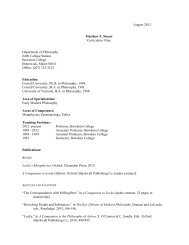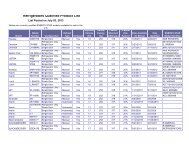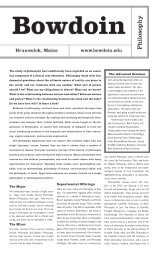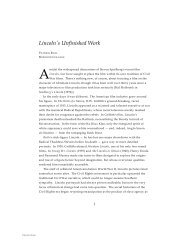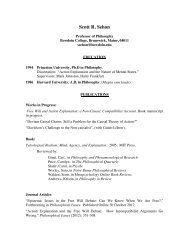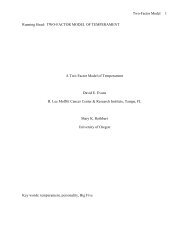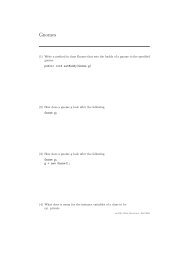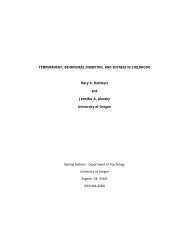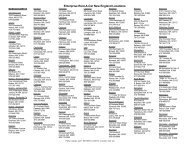You also want an ePaper? Increase the reach of your titles
YUMPU automatically turns print PDFs into web optimized ePapers that Google loves.
Although this is commonly not an easy thing to do, the quantitative analysis actually<br />
does this comparison in its calculation (this is shown graphically in Fig. 2 below).<br />
Fig. 2. Same spectrum as in Fig. 1 (shown in solid black) compared to the outline of<br />
the pure element intensities for each element.<br />
The ratio of the element’s peak height in a sample to the pure element collected under<br />
the same conditions is actually used in the quantitative calculation as the k-ratio. All<br />
other steps in the quantitative analysis with and without standards are identical and the<br />
only difference is whether the pure elements are actually measured (with standards) or<br />
are calculated (standardless). Before the k-ratios are calculated, the peaks are<br />
identified, a background is fit, a peak-fitting routine is used and overlapped peaks are<br />
deconvoluted, and the net count intensities are measured. After the k-ratios are<br />
calculated, the ZAF corrections are applied, where: Z is an atomic number correction<br />
which takes into account differences in backscattered electron yield between the pure<br />
element and the sample (high atomic number pure elements will produce fewer x rays<br />
because some of the beam electrons leave the sample before losing all of their energy);<br />
A is the absorption correction which compensates for x rays generated in the sample but<br />
which are unable to escape when they are absorbed within the sample (low-energy x<br />
rays tend to be heavily absorbed); and F is the fluorescence correction which will correct<br />
for the generation of x rays by other x rays of higher energy. In order to calculate the<br />
ZAF factors, the composition must be known, but we need to know the ZAF factors to<br />
calculate the composition. This apparent contradiction is resolved by calculating ZAF<br />
<strong>EDAX</strong> Training Course - Quantitative Analysis - page 2




